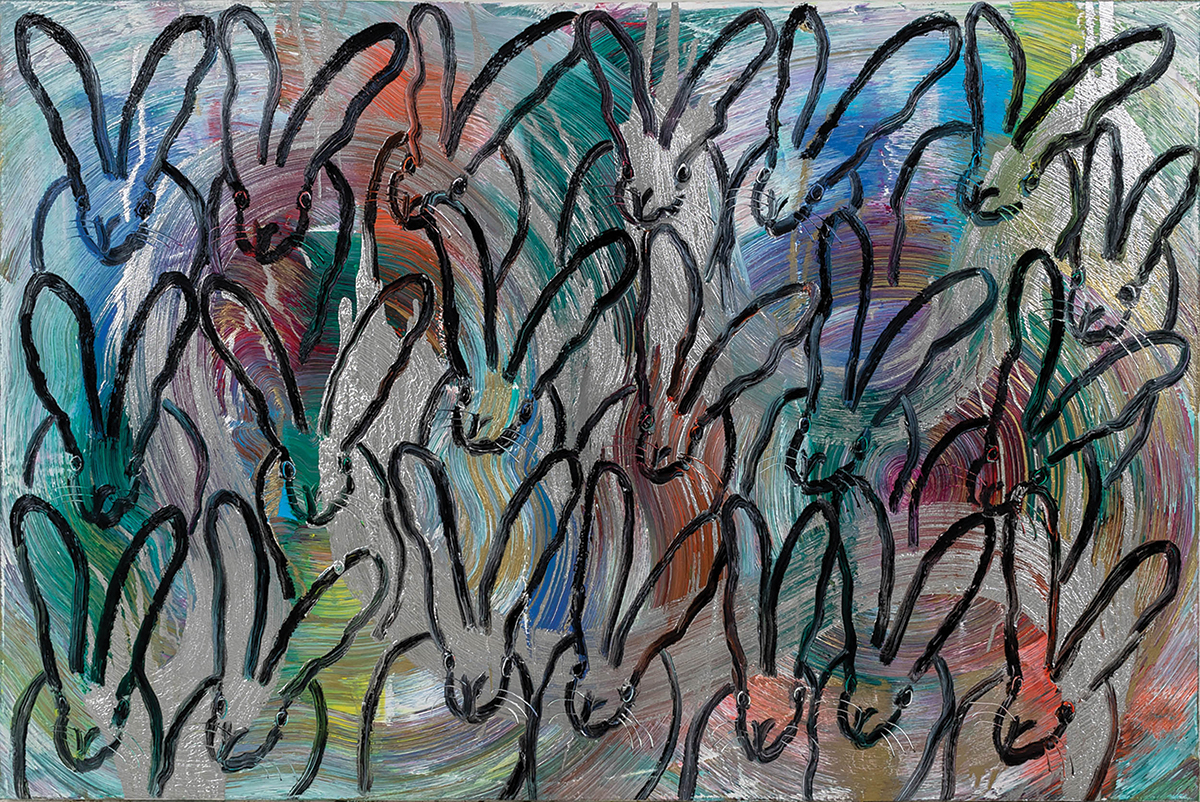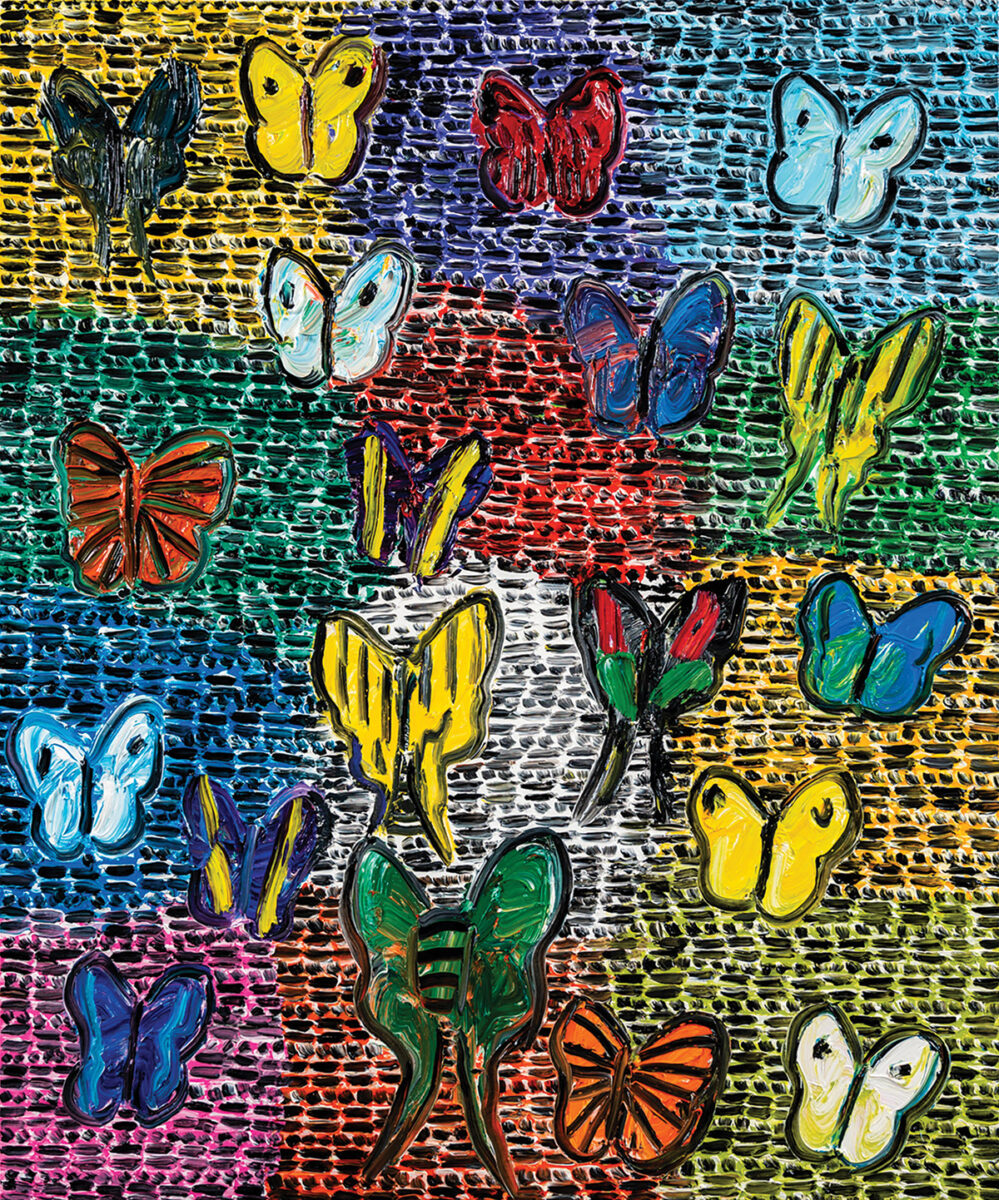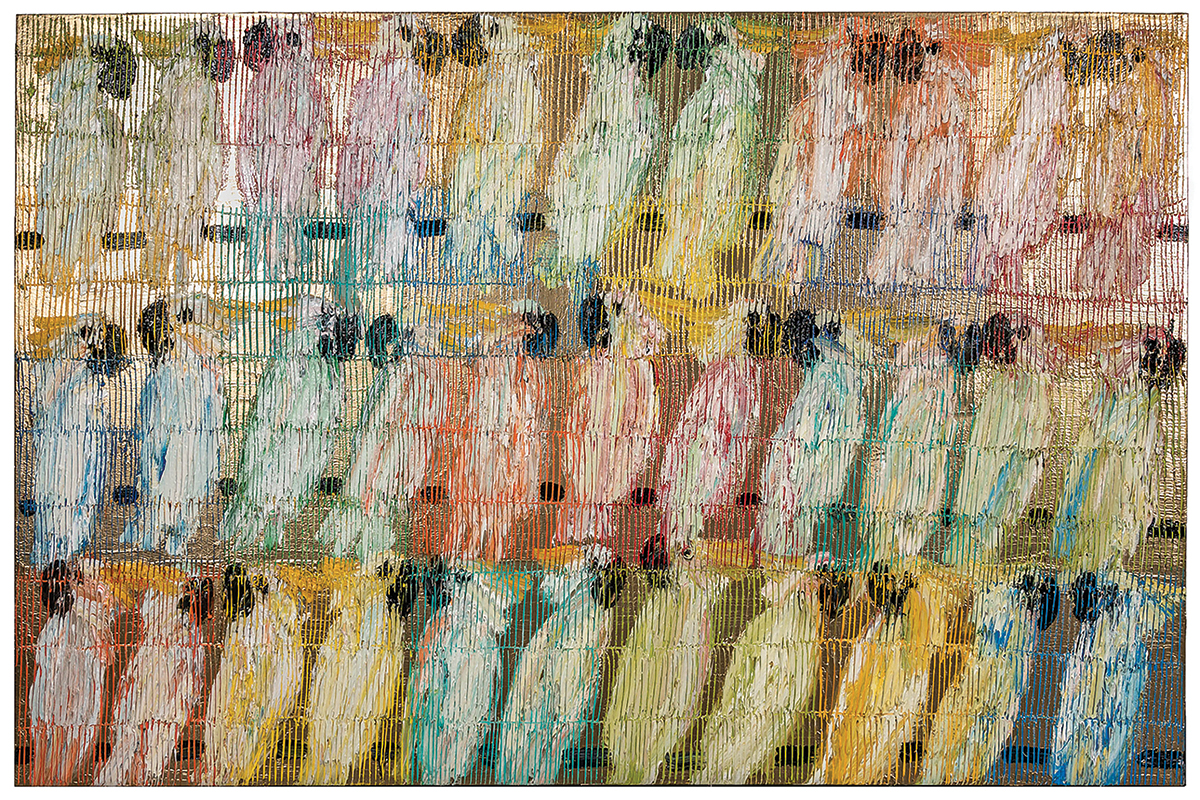Bender Gallery hosts art star Hunt Slonem in June

Hunt Slonem is the Andy Warhol of bunnies, birds, and butterflies. His oils have hung in New York’s Met and the Whitney Museum of American Art, at the MOMA in Moscow, and in other elite halls. Slonem has been fêted in cities ranging from culturally rich New Orleans to surreally rich Dubai — all due to the appeal of small animals painted on repeat.
Today, a framed Slonem original can fetch the same price as an architect-rendered tiny home, jaunty roof and all.
But while his paintings are the main attraction in many not-so-tiny homes, they’ve also been turned into wallpaper and fabric by upscale retailers that include Lee Jofa. Besides being ideal platforms for Slonem’s patterned motifs, these home furnishings make the Neo Expressionist’s work more accessible. As a bonus, his foray into interior design allows Slonem to dismiss outdated notions of fine-art purism, as he did in a recent interview with Carolina Home + Garden.
“Artists have been doing it for hundreds of years,” says Slonem. “The great American watercolorist Charles Burchfield was a wallpaper-maker. Picasso did ceramics.” He mentions Cubism and the Trompe l’oeil Tradition, a Met exhibit from earlier in the year. The latter genre is essentially optical illusion, and its cheeky nature has long made it a presence in quotidian print media, including advertising. But its possibilities were never lost on Cubists Braque, Gris, and Picasso, who leveraged the technical genius of trompe l’oeil — “trick of the eye” — into master status.
Erasing the perceived line between elite and everyday art continues with Slonem.
“I don’t know why people continue to draw those boundaries,” he says airily. “I love having fabrics and wallpapers made of my work. And I’m thrilled to have it done while I’m still alive to see it. Most artists aren’t.”
Merchandising can even be viewed as an act of preservation. A bird- or bunny-upholstered chair “is an extension of the work,” says Slonem, “that exists far beyond the original.” One of the artist’s other deep dives is his restoration of 19th- and early-20th-century mansions in Louisiana, New York State, and other locales. Given the scale and condition of the estates, the goal — a return to period glory — is daunting in myriad ways.

“All the homes,” says Slonem, “have huge presences. They attract all kinds of energies over time, some of them really powerful.” Added to the presumed roster of subcontractors, Slonem hires energy workers to sort out a home’s “metaphysical wiring,” its “soul and spirit.” He adds, “I’m always awestruck by the level of intensity in what goes on — nothing bad, necessarily, but a lot of history.”
Slonem denies a direct connection between his restoration of American castles and his painting, but common to these pursuits is a vibe of emboldened mysticism. His bunnies are icons, at once droll and insistent. Their ears pour soul. “Animals have a much bigger agenda into the realm of transformation than we do,” the artist remarks.

He grew up keeping rabbits and is known today for his menagerie of pet parrots, among them birds named Sybil and Mercury. His childhood and early college years were spent living in island locales, and tropical colors influenced his palette early on.
Years ago, a channeler told Slonem that rabbits would take him places. “And they certainly have,” he says.
On Thursday, June 1, Hunt Slonem will be signing his newest book, Butterflies, at Bender Gallery (29 Biltmore Ave.), where the artist is exclusively represented in Asheville. (www.bendergallery.com) The book signing opens Year of the Rabbit, a show of Slonem’s work that runs through June 30. Contact the gallery to reserve a copy of the book for the June 1 signing: 828-505-8341, miles@bendergallery.com.
